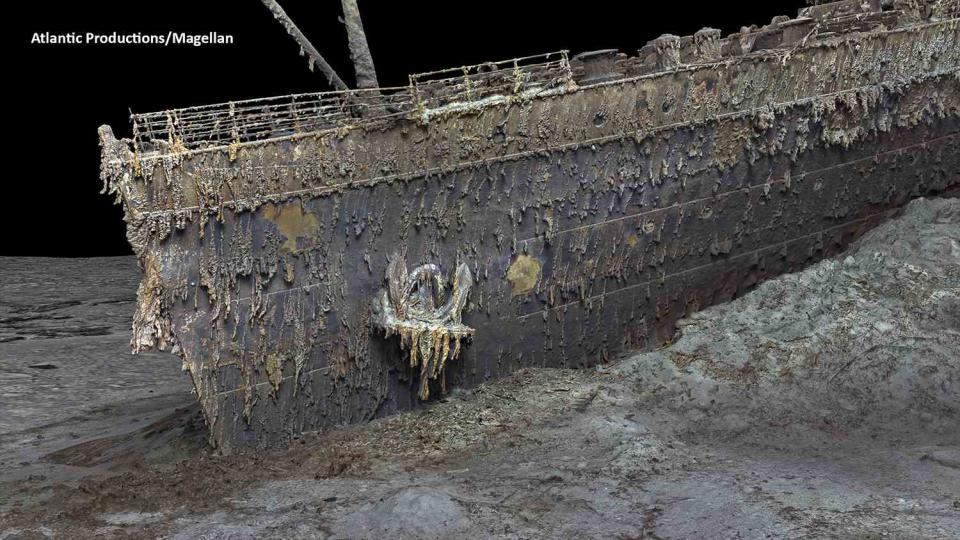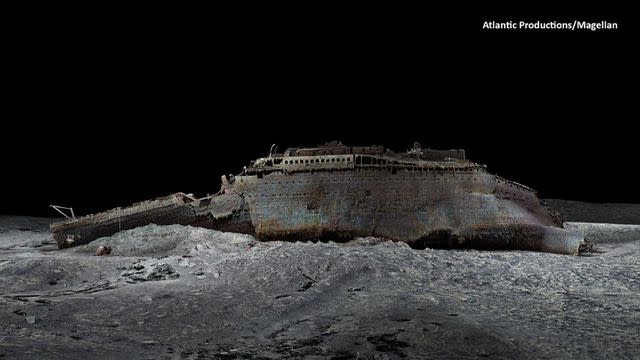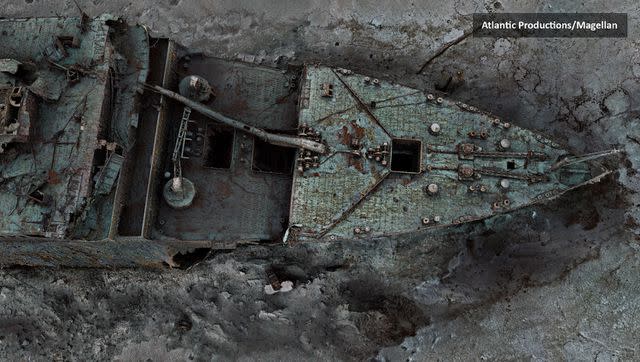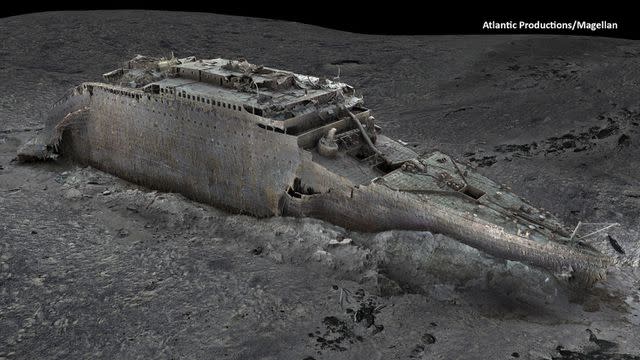'Game-Changing' 3D Scan of Titanic Reveals Ship's Final Resting Place in Close-Up Detail
Digital scans of the famous cruise liner may provide an answer to why Titanic sank in April 1912, killing more than 1,500 crew and passengers

The Titanic is finally giving up its secrets.
Scientists are hoping new full-sized scans of the famous cruise liner will uncover the truth as to how the famed ship sank after it struck an iceberg in April 1912, killing more than 1,500 crew and passengers.
Previously only sections of the wreckage, which lies about 12,500 feet under the Atlantic Ocean, have been captured on camera, but now the ship in its entirety can be viewed in new 3D digital scans created using deep-sea mapping.
'I have been studying Titanic for 20 years, but this is a true game-changer," Titanic analyst Parks Stephenson said in a release. "What we are seeing for the first time is an accurate and true depiction of the entire wreck and debris site. I'm seeing details that none of us have ever seen before and this allows me to build upon everything that we have learned to date and see the wreck in a new light."
Related:New Titanic Details Revealed for First Time in High-Definition 8K Video of Undersea Wreck

The new full-sized scans, which were carried out in the summer of 2022 by deep-sea mapping company Magellan Ltd, reveal how the ship looks without the ocean water surrounding it. The images will form the centerpiece of a new documentary about the project made by Atlantic Productions.
To capture the startling new images the team sent out a submersible to survey the wreck, spending more than 200 hours capturing more than 700,000 images of the Titanic, which is split in two, from every angle. They then put together the images to create an exact 3D reconstruction.
Never miss a story — sign up for PEOPLE's free daily newsletter to stay up-to-date on the best of what PEOPLE has to offer, from juicy celebrity news to compelling human-interest stories.

"The depth of it, almost 4,000 meters, represents a challenge, and you have currents at the site, too — and we're not allowed to touch anything so as not to damage the wreck," Gerhard Seiffert, who led the planning for the expedition, told the BBC.
"And the other challenge is that you have to map every square centimeter - even uninteresting parts, like on the debris field you have to map mud, but you need this to fill in between all these interesting objects," he added.

According to the release, the 3D renderings show a huge debris field surrounding where the bow and the stern of the ship fell. The scattered items include unopened champagne bottles, statues and metalwork from the ship — and even dozens of shoes, per the BBC. The two parts of the famed liner are separated on the seafloor by about 2,600 feet.
The scan also shows smaller detailing of the ship like the serial number on one of the propellers and larger details like the wrecked stern, which appeared to be a crushed mess of metal.
RELATED Video: 'Rare' Footage of Titanic Shipwreck Released for First Time: See into Chief Officer's Cabin and More
"It allows you to see the wreck as you can never see it from a submersible, and you can see the wreck in its entirety, you can see it in context and perspective. And what it's showing you now is the true state of the wreck," Stephenson told the BBC.
"We really don't understand the character of the collision with the iceberg," he continued. "We don't even know if she hit it along the starboard side, as is shown in all the movies — she might have grounded on the iceberg."
For more People news, make sure to sign up for our newsletter!
Read the original article on People.

